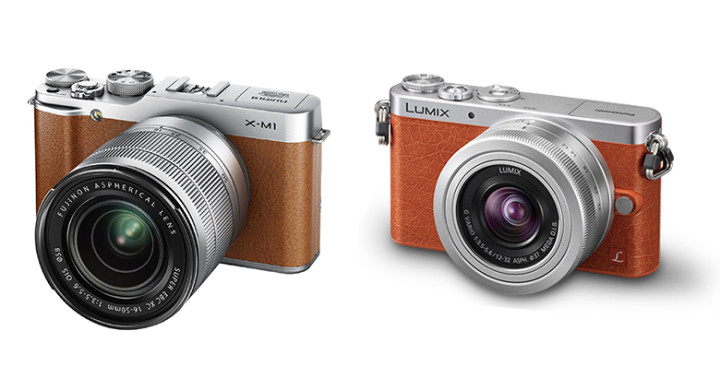If a tree falls in the forest, does anybody in the photography world notice?
Well, if the proverbial tree is the Panasonic Lumix GM1 and the forest is all the flurry surrounding Sony’s first mirrorless full frame interchangeable lens cameras, the A7 and A7r, then we probably only heard a couple of branches crack.
We love Panasonic dearly, but they really couldn’t have picked a more inconvenient date to announce their new and rather innovative mirrorless interchangeable lens camera, the smallest, lightest and most compact of all Micro Four Thirds cameras to date. It was only yesterday that Sony took the world aback with the A7 and A7r, and most photography aficionados still haven’t quite recovered from the buzz.
Of course, Panasonic probably decided the announcement date far in advance, so let’s blame bad luck rather than poor decision making!
The extra-small and compact Panasonic Lumix GM1
The Panasonic Lumix GM1 is the first model in Panasonic’s new premium compact line, designed to compete with similar high-end compacts like the Sony RX100 II.

Why is it considered premium? Well, it has the same 16MP Live MOS sensor found in the high-end Lumix GX7, a sturdy all-magnesium alloy body (which you can apparently stand on without it breaking), ISO 200-25600 with the option of an extended 125 ISO, an incredible 1/16000 shutter speed, focus peaking, Full HD 1920 x 1080, 60i/50i recording in AVCHD and MP4, a tilt and touch 3″ LCD screen, two dimensional noise reduction and built-in WiFi to name a few important features.
The fact that the GM1 is so compact will make it a very interesting option for both enthusiasts/professionals looking for a convenient second or third body for informal shooting, and newbie photographers.
There are two reasons Panasonic was able to make the camera so compact. First, they integrated a motor instead of a spring into the shutter design, thereby reducing the size of the unit by 80%. Furthermore, they eliminated the frame that supports the sensor in other MFT cameras. Instead, the sensor is now directly attached to the main unit frame. For a more technical explanation, you can visit the official Panasonic press release.
Panasonic knows all too well that low-end compact cameras are on their way out and smartphones are taking over. In fact, it has been rumoured that Panasonic will step out of the low-end compact camera business altogether. There is little doubt that now they will focus all their efforts on premium compacts such as the GM1 and high-end mirrorless cameras such as the GH3 and GX7.
The design looks even more retro than the GX7 and the similarity to the Fujifilm X-M1 is quite obvious.

And what about the two new lenses?
Panasonic has also announced two new lenses for its Micro Four Thirds system.
The first is the Lumix G Vario 12-32mm f/3.5-5.6, an all-metal kit lens that comes with the GM1. It is supposedly the smallest zoom for MFT and delivers the highest quality amongst all MFT standard zooms. Though it lacks a manual focus ring, you can still manually focus using the touchscreen.
The second is the Leica DG Summilux 15mm f/1.7. This lens is the fourth prime signed by Leica for the MFT mount. It has a 30mm equivalent focal length on a full frame sensor and could be a great companion for street photography. There are actually three viable options now for that focal range: the Olympus M.Zuiko 17mm f/1.8, the Lumix 20mm f/1.7 and now the Leica 15mm f/1.7. As we can see, the MFT lens system is continuing to expand and add more lenses to its line-up. Later on, Lumix/Leica should also release the already announced 42.5m f/1.2 which could end up as one of the best portrait lenses for the system.
Is the Panasonic Lumix GM1 a camera you’d be interested in? What are your thoughts about the creation of yet another G line?



